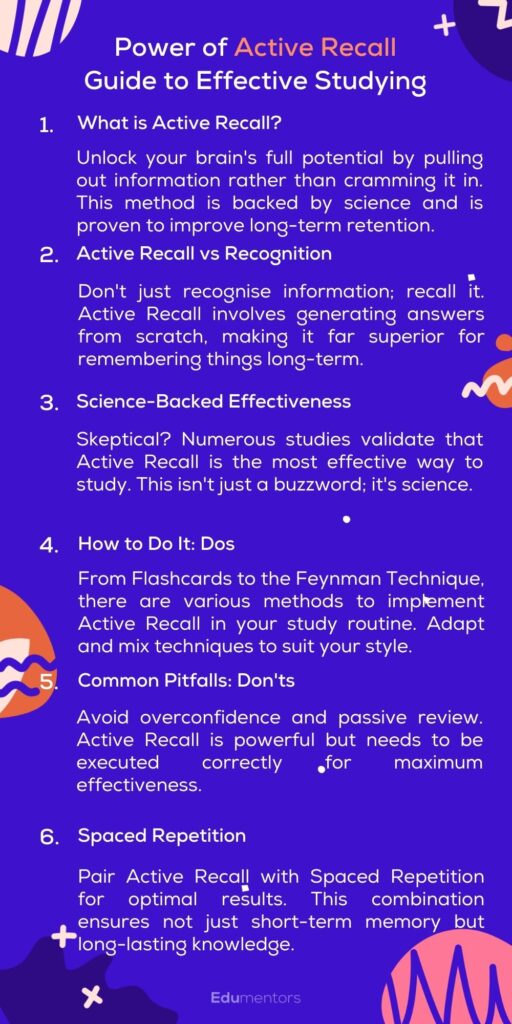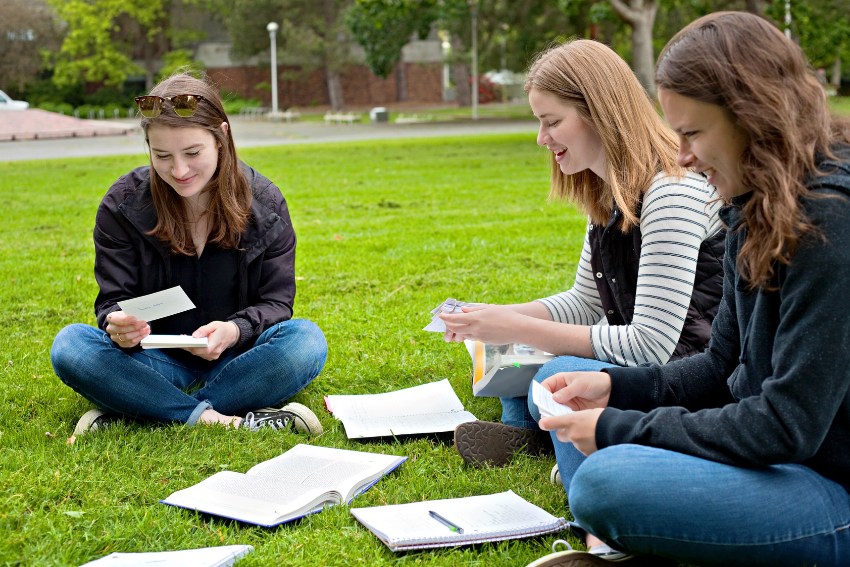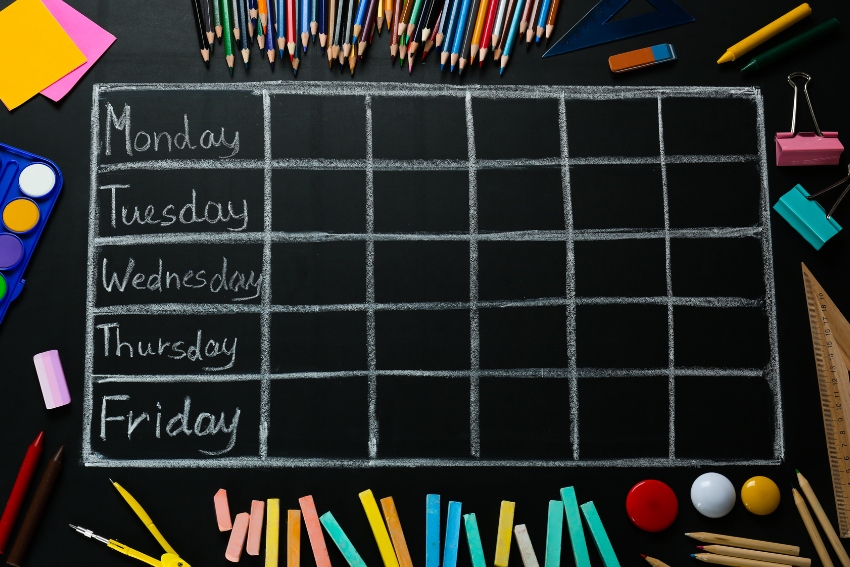3 Active Recall Techniques Everyone Should Know
Welcome to a new approach to effective learning: active recall. If you’ve ever found yourself re-reading notes or textbooks the night before an exam, only to forget most of it the next day, you’re certainly not alone. Many students rely on passive methods of study, which often yield disappointing results. But what if there was a more efficient, scientifically-backed method? That’s where active recall comes in.
Active recall is a study technique that shifts the focus from passive to active learning. But what exactly is active recall? Simply put, it’s a strategy that forces you to actively stimulate memory recall during the learning process. This not only enhances your ability to remember information but also deepens your understanding of the material. If you’re curious about how to implement active recall techniques in your study routine, read on. We’ll explore various methods to help you become a more effective learner.

What is Active Recall
If you’ve been asking yourself, “What is active recall?” then prepare for a transformative revelation. Far from being merely an academic buzzword or a trendy fad, active recall stands as a scientifically-backed, research-supported cornerstone in modern learning methodologies. In contrast to traditional learning methods—where you cram facts, dates, and formulas into your memory, crossing your fingers that they’ll stick—active recall employs a completely different strategy.
active recall is centred around the cognitive process of retrieval, making it fundamentally distinct from other methods. Instead of shoving new information into your brain and hoping it sticks around, active recall is about pulling that information back out when you need it. This retrieval process reinforces neural pathways, making the information more accessible for future reference. It’s akin to mental weightlifting; the more you recall, the stronger your memory becomes.
What sets active recall apart is not just its effectiveness but its practicality. It’s a versatile tool that can be applied across subjects, from the sciences to the arts, and for learners of all ages. Whether you’re a university student tackling complex equations or a lifelong learner diving into a new language, active recall provides a robust framework for deeply ingrained, long-lasting knowledge.
Active Recall vs Recognition
You might be tempted to equate active recall with more familiar, recognition-based methods of studying, but the two are markedly different. Recognition is the cognitive equivalent of a multiple-choice test. You’re presented with options, and you pick the one that looks right. While it might feel like you know the material, the truth is, you’re just good at picking it out from a list.
Active recall, however, is a more challenging but infinitely more rewarding exercise. It’s like an open-book exam where the book is your brain. You’re not given any options to choose from; you have to produce the answer entirely from your memory. This act of generating answers from scratch, with no cues or hints, has been shown by numerous studies to be incredibly effective for long-term retention. While different learning style models might suggest varied approaches to studying, active recall techniques have proven effective regardless of your preferred learning style. It’s the difference between seeing a familiar face and being able to name that person. Knowing the name is active recall; merely recognising the face is just that recognition.
If you find that you need additional help in preparing for exams or simply want to boost your confidence and keep up with your schoolwork, consider online tutoring platforms like Edumentors. They offer high-quality tuition from tutors who are alumni of the UK’s top universities. The personalised guidance can complement your active recall practices, ensuring you’re well-equipped for academic success.

Active Recall is Effective – Myth or Reality?
Have you heard the rumblings about active recall but remain sceptical? You might be wondering, “Is this just another academic fad, or is it genuinely the most effective way to study?” Let’s put those doubts to rest: the science is clear, and it’s overwhelmingly in favour of active recall.
First off, what is active recall again? In the simplest terms, it’s the practice of actively stimulating your memory to recall information. Now, how does this relate to being effective, you ask? Well, research consistently indicates that the more you engage in this kind of active studying, the more proficient you become at retrieving the information later. In essence, it’s not just about memorising facts but also about enhancing your response to recall, meaning the speed and accuracy with which you can retrieve those facts when needed.
So, is active recall effective? In short, yes. It’s not just another buzzword but a tried-and-true method backed by rigorous scientific research. When it comes to active studying techniques that genuinely work, active recall stands head and shoulders above the rest.
How to Use Active Recall – Dos & Don’ts
So, you’re convinced that active recall is the best way to study, but how do you go about implementing it in your routine? Before diving into specific techniques, remember that your study environment plays a crucial role in your success. Creating an optimal study environment can significantly enhance the effectiveness of the methods we’re about to discuss. Additionally, effective time management is essential to make the most of your active recall sessions. Now, let’s walk through some practical ways to integrate active recall into your study sessions effectively.
✅ Do’s
1. Flashcards – The Best Way to Study?
If you’re in search of the best way to study, you may not need to look any further than flashcards. These simple yet remarkably effective tools have stood the test of time and for good reason. At first glance, flashcards may seem rudimentary. You write a question on one side and the answer on the other. Simple, right? But don’t let their simplicity fool you; it’s precisely this straightforward format that makes them so effective for active recall.
When you look at the question and then recall the answer, you are engaging your brain in active retrieval of information. Studies have shown that the act of retrieval, or pulling information out of your brain, enhances future retrieval. This is the essence of active recall, and flashcards facilitate this brilliantly.
Tips for Effective Use
To make your flashcard sessions even more effective, you can incorporate the blurting revision method. Before flipping the card to see the answer, say what you think the answer is out loud. Vocalising your answer adds an extra layer of memory encoding, fortifying your ability to remember it later.
Long-Term Gains
The ultimate goal isn’t just to get through your next exam but to retain information meaningfully for the long term. Flashcards contribute to this by facilitating active studying, allowing you to engage with your learning material in a dynamic way.
So, the next time you find yourself overwhelmed with a vast amount of information to memorise, consider using flashcards. They are not just a study method; they are a proven learning technique that can make a significant difference in how effectively you retain information.

2. SQ3R Method – More than Just Reading
When it comes to effective study techniques, the SQ3R Method deserves special attention. Standing for Survey, Question, Read, Recall, and Review, this five-step approach goes far beyond passive reading. It is a structured, interactive process designed to give you a comprehensive understanding of your study material, making it one of the best ways to study effectively.
Breaking Down the Steps
- Survey – Before diving into the text, take a few minutes to scan through it. Look at headings, subheadings, and highlighted terms. This gives you a general idea of what the content is about, preparing your brain for what’s to come.
- Question – Now that you have an overview, start asking questions. What do you want to learn from this text? What are the key concepts? Formulating questions sets the stage for active learning.
- Read – As you read, keep those questions in mind. This will help you focus on extracting relevant information, rather than passively reading through the text.
- Recall – After reading a section, close the book and try to recall the main points. This is where the magic of active recall happens. The more you practise this, the better your information retention will be.
- Review – Finally, go back to your initial survey and the questions you posed. Did you get the answers? This review ties everything together and enhances long-term retention of the material.
Why It Works
The SQ3R Method is not just another study tip; it’s a potent learning technique. By actively engaging with the content at various stages, you’re compelled to interact with the material in a way that optimises both understanding and retention. This iterative approach of questioning, reading, and reviewing fosters a deeper understanding, making it easier to recall information when you need it most.
A Lifetime Skill
The SQ3R Method is not just for acing your next exam; it’s a life skill that will serve you in many professional and personal learning scenarios. Once you get the hang of it, you’ll find that it becomes second nature, enhancing not only your academic performance but also your lifelong learning capabilities.
3. Feynman Technique – The Teacher Becomes the Student
The Feynman Technique is named after Richard Feynman, a Nobel laureate physicist renowned for his ability to break down complex topics into understandable language. This learning technique is not just about absorbing information but also about conceptualising it in a way that makes it easy to explain. In short, the Feynman Technique turns you into both the teacher and the student, making it one of the tips that yield the most effective learning results. This technique works particularly well when implemented in online study groups, where you can practice explaining concepts to peers.
The Underlying Philosophy
At its core, the Feynman Technique operates on a straightforward philosophy: “If you can’t explain it simply, you don’t understand it well enough.” This principle forces you to delve deep into the subject matter, confront gaps in your understanding, and gain a thorough comprehension. It’s an approach that requires more than rote memorisation; it demands a fundamental understanding of the subject.
How to Implement the Feynman Technique
- Choose a Topic – Start by selecting a topic you want to understand better.
- Study the Topic – Dive into your textbooks, lectures, or any other reliable sources to grasp the basics.
- Teach It – Pretend you’re teaching the topic to someone who knows nothing about it. This could be an actual person, a rubber duck, or even an imaginary student.
- Identify Gaps – As you explain, you’ll inevitably find areas where you struggle. These are the gaps in your understanding.
- Review and Simplify – Go back to your sources to fill in those gaps. Then, try teaching it again, simplifying your language and examples as much as possible.
Benefits of the Feynman Technique
The Feynman Technique is particularly effective for complex topics requiring deep understanding. As you teach, you’re forced to organise your thoughts, identify logical connections, and put your understanding into words. This process not only highlights your knowledge gaps but also helps you internalise the material.
A Skill for Life
The Feynman Technique is not just a study tip; it’s a lifelong skill. By mastering the ability to learn and teach simultaneously, you equip yourself with a tool that can be applied in various aspects of life, from your professional career to personal development.

Pre-testing – Why It’s an Effective Way to Study
While the thought of testing yourself before you’ve even studied might seem counterintuitive, pre-testing is a proven strategy in the realm of active learning and is widely considered one of the most effective ways to study. The idea may be unsettling at first, but trust us, the dividends this method pays in the long run are substantial. Let’s delve deeper into why pre-testing is a cornerstone in effective studying:
The Steps of Effective Pre-testing
- Initial Assessment – Before hitting the books, jot down questions that are likely to appear on an exam or that you think are critical to understanding the topic at hand.
- First Attempt – Try to answer these questions to the best of your ability. Don’t worry if you don’t know the answers; that’s the whole point.
- Study Session -Now that you’ve attempted the pre-test, proceed to your study session as you normally would.
- Review and Compare – After studying, go back to your initial questions and try to answer them again. You’ll likely find that you remember the answers far better than if you had skipped the pre-testing step.
The Benefits of Pre-testing
- Identifying Gaps – Knowing what you don’t know is half the battle. Pre-testing will highlight the areas you need to focus on during your study session.
- Improved Focus – When you know what you’re lacking, your study sessions can be more targeted, making them shorter and more effective.
- Boosts Confidence – As you compare your pre- and post-study answers, you’ll clearly see how much you’ve learned, giving you a confidence boost before the actual exam.
- Data-Driven Learning – Pre-testing is essentially a form of self-generated feedback. It helps you tailor your study sessions based on actual data, not just gut feelings or vague notions of what you “should” study.
❌ Don’ts
Active recall is a powerful tool in your study arsenal, but like any tool, it has to be used correctly to be effective. Let’s delve deeper into some common pitfalls that students often stumble upon when they’re implementing active recall as their learning technique.
Overconfidence -The Dangerous Assumption of Mastery
Overconfidence is a tricky issue that many students face when they get a question right for the first time. While it’s a great morale booster to answer correctly, assuming you’ve mastered the topic is premature and can be detrimental. Mastery is about consistency over time, not just a one-off correct answer. Overconfidence leads to neglect, and neglect leads to forgetting; it’s a cycle that you’ll want to avoid. Consider using a well-rounded learning technique that includes repeated testing on the topic to confirm mastery.
Lack of Review – Spaced Repetition and Active Recall—A Match Made in Study Heaven
When it comes to learning, active recall is just one half of the equation. The other half is spaced repetition. This involves reviewing material at increasing intervals over time. The process reinforces the neural pathways in your brain, making it easier to retrieve information when you need it. For optimal results, these study sessions should be scheduled when you’re well-rested, as quality sleep plays a crucial role in memory consolidation. Ignoring these crucial components is missing out on an effective study method. Make sure to integrate both active recall, spaced repetition, and good sleep habits for an impactful study session.
Overcomplication – The Allure and Downfall of Technological Solutions
The modern world offers a plethora of digital tools and software that promise to make studying more effective. However, the basics often work best. Overcomplicating your study setup can distract you from the real task at hand—learning. What is the best way to study? The one that allows you to focus on the material without unnecessary distractions. Sometimes, a simple flashcard can be more effective than a complicated app filled with features you don’t need.
Passive Review – The Silent Killer of Effective Active Recall
Passive review is like the junk food of study habits. It feels good but offers little nutritional value for your brain. Flipping through flashcards and reading the answers feels like studying, but without the act of recalling the information, it’s far less effective. The real learning happens when you actively engage with your study materials, challenging your brain to retrieve the information it has stored.
Ignoring Weak Areas – Facing Your Study Demons
It’s easy to focus on what you know and avoid the topics you find difficult. However, ignoring your weak areas is a flawed learning technique. These are the areas that will trip you up in exams and assessments. They require your attention the most. Use active recall to work on these challenging topics intensively. Make them a regular part of your study schedule until they are no longer your weak areas but become your strengths.

Conclusion
As we wrap up this comprehensive guide, it’s crucial to reiterate that active recall isn’t just another study technique—it’s arguably the best technique to study. Whether you’re aiming for top grades, looking to sharpen your professional skills, or simply trying to make the most out of your study sessions, active recall is your go-to strategy. This learning method goes beyond mere recognition or passive review; it’s about actively engaging your brain to retrieve information, which is a far more potent way to secure data in your long-term memory. active recall effectively active in bringing something about—long-lasting knowledge.
You might ask, “Why do I struggle to retain information even after hours of studying?” The answer often lies in the method. Merely re-reading text or glancing over notes doesn’t usually result in effective learning. active recall changes that by forcing you to engage with the material, giving you genuine insight into the subject matter. It stands out as the best study technique for anyone serious about their learning journey. It’s not just about preparing for an exam; it’s about understanding and retaining knowledge for the long haul. When you make it a habit to incorporate active recall techniques into your study regimen, you’re setting yourself up for a lifetime of effective learning.
So, there you have it—a complete guide to active recall, the game-changing study technique that can help you ace your exams, master complex subjects, and become a more effective learner. Thank you for joining us on this educational journey, and here’s to your future academic triumphs!









